Many may assume that the nickel is not worth anything. But a 1956 Jefferson Nickel in top shape has a significant collectible value. From cameo coins to full-step varieties and scarce conditions, it’s a date you don’t want to miss out on the series. So hop on, and let’s see the different variety and value of a 1956 Jefferson Nickel today.
1956 Jefferson Nickel Price Chart
The 1956 Jefferson Nickel has a mintage of over 103 million, combined from the Philadelphia and Denver Mint. It is one of the commonly minted dates in the Jefferson Five Cents 1938-1964 Series. Although, there are a few scarce conditions identified by PCGS, which we will further discuss later.
For now—here’s a chart to give you an idea of how these coins may trade today based on the mint location and condition.
| Coin Condition | Philadelphia | Denver |
| Good | $0.10 | $0.10 |
| Fine | $0.10 | $0.10 |
| Extremely Fine | $0.10 | $0.10 |
| AU 50 | $0.10 | $0.10 |
| AU 58 | $0.15-$0.20 | $0.15-$0.20 |
| MS 60 | $0.25-$0.35 | $0.25-$0.35 |
| MS 61 | $0.50-$0.60 | $0.50-$0.60 |
| MS 62 | $0.75-$0.85 | $0.75-$0.85 |
| MS 63 | $2-$3 | $2-$3 |
| MS 64 | $12.50-$15 | $8-$10 |
| MS 65 | $17.50-$20 | $15-$17.50 |
| MS 66 | $40-$90 | $35-$45 |
| MS 67 | $210 | $180 |
| Proof | $0.50-$155 | / |
1956 Jefferson Nickel Information
- Coin Value: Five Cents
- Designer: Felix Schlag
- Diameter: 21.21 mm
- Thickness: 1.95 mm
- Weight: 5.00 g
- Edge: Plain
- Composition: 75% Copper and 25% Nickel
Obverse Elements
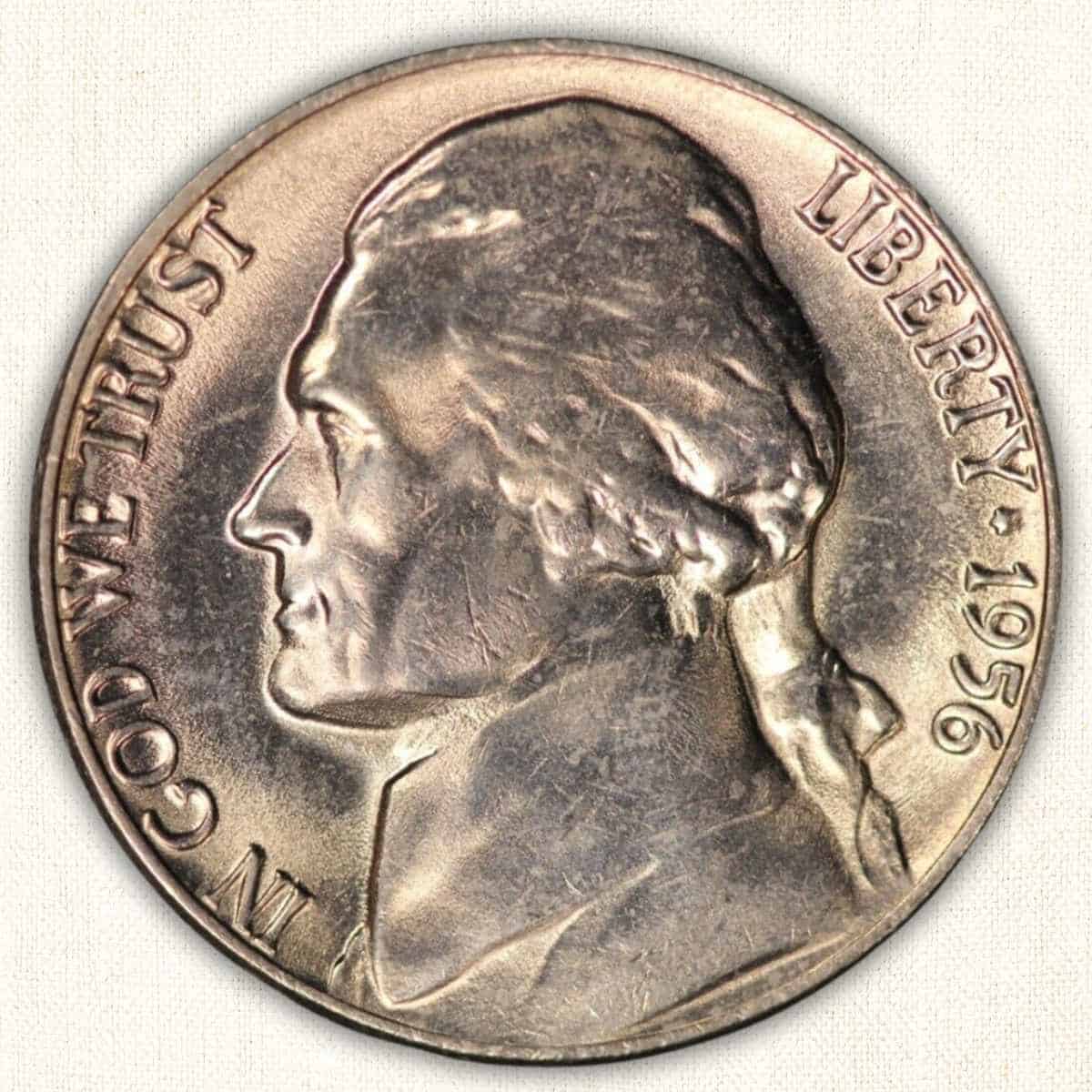
The obverse side features the bust of President Thomas Jefferson facing towards the left. Its premium details include fine lines in the hair, high-point cheeks, and luster flow from collar to shoulder.
On the left side is an arched inscription that reads “In God We Trust.” Then, on the right side is the word “Liberty” and the Mint year, separated by a five-pointed star.
Reverse Elements
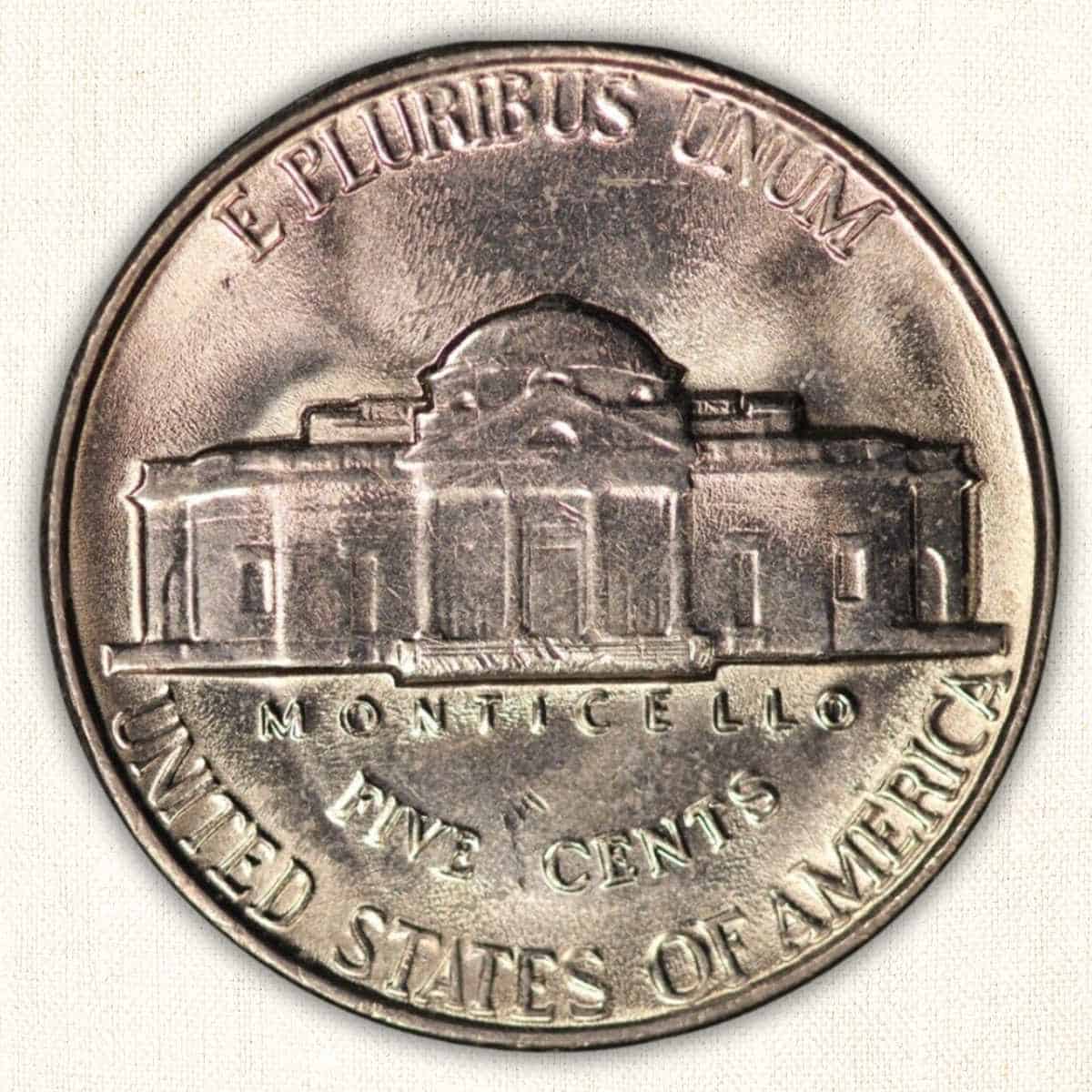
The reverse details are more complex due to Monticello, Jefferson’s home name. Its defining characteristics lie in the columns, triangle roof, and stair steps. But the latter is the most crucial in determining the value of a 1956 Jefferson Nickel. (Later, we’ll tackle the Full Steps description and price for better understanding).
With the center element, it has an inscription below that reads “Monticello” and a D mint mark on the right side—if from Denver Mint. Above reads “E Pluribus Unum,” and below are the words “United States of America” and “Five Cents.”
1956 Jefferson Nickel Varieties (No Mint Mark, “D,” and Proof)
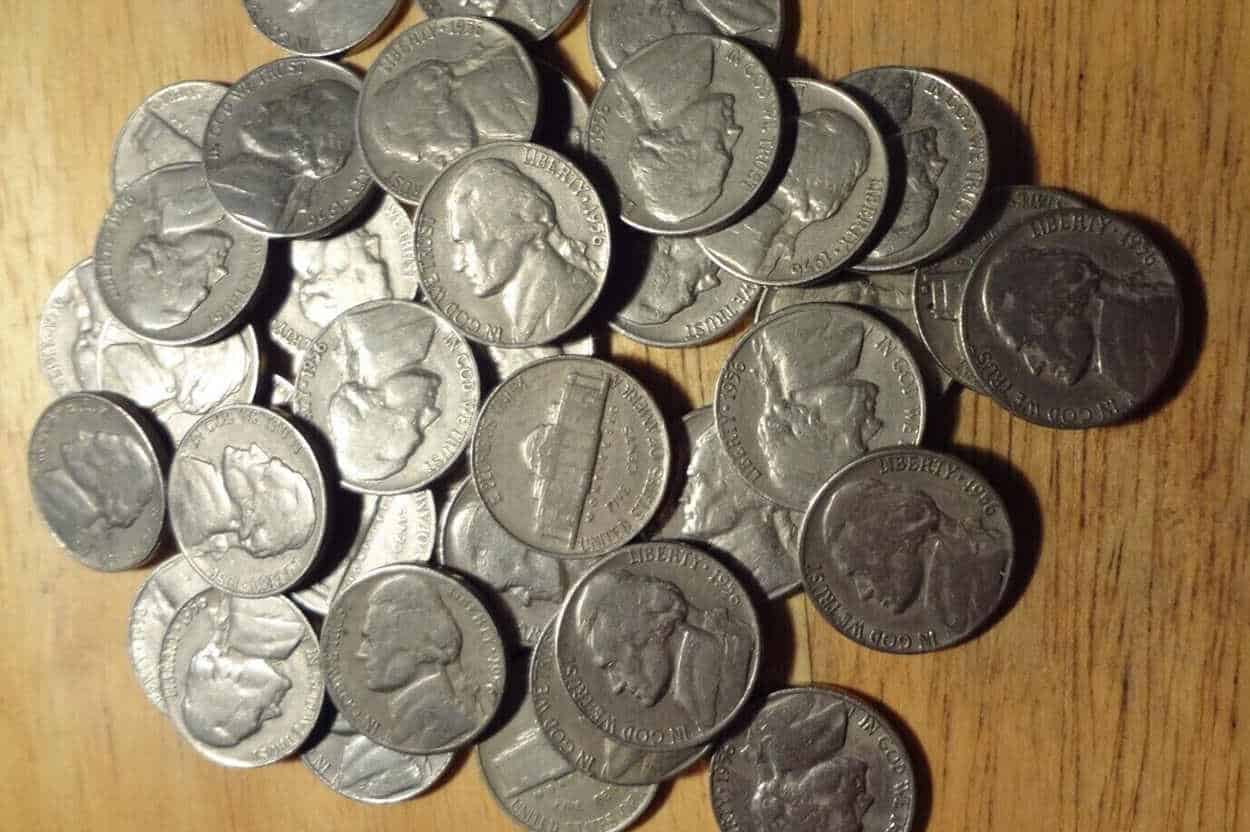
Philadelphia minted two types of nickel. One is the regular struck, no mint mark coins with a mintage of over 35 million. The second is the proof coins, with a total mintage of 669,384. Denver, on the other hand, minted over 67 million regular strike nickels.
The two Mints offer scarce nickel, particularly the Six Full Steps (6FS) and Five Full Steps (5FS) designations. PCGS and NCG use this code on regular strike coins that exhibit complete steps on the Monticello. Nickels with this grade are extremely rare and carry massive premiums, especially for 1956.
So how much are they worth? Let’s see their base value and worth in the open market.
1956 P (No Mint Mark) Jefferson Nickel Price
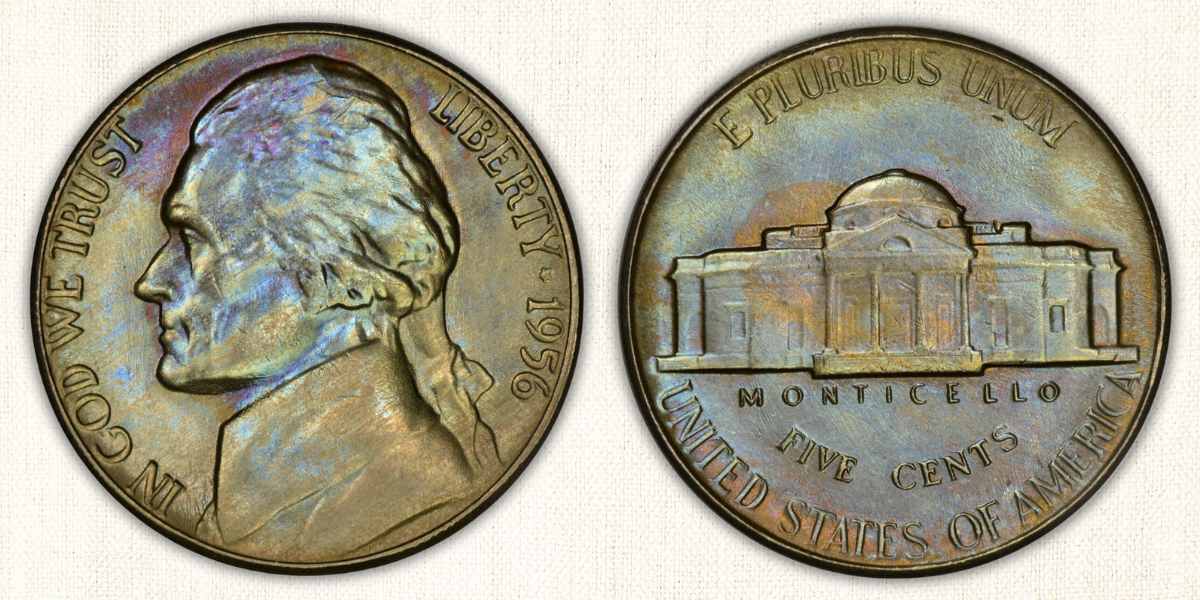
A 1956 P Nickel in circulated condition is worth $0.10 to $0.20, while a higher grade sells for $210 in the open market. But it can definitely go above the suggested price, as seen on the highest auction record for a 1956-P MS67+ regular strike, which sold at $4,000.
Compared with other 1950s nickels, the 1956 Philadelphia coins are well-struck and have a lustrous color. However, this does not reciprocate with the Six Full Step details in the Monticello.
Most grades available today are those with MS60 and MS64 designations. But grades MS65 and above are challenging to find.
Now, let’s view the price of a 1956 nickel based on the steps.
| 1956 P Jefferson Nickel Full Steps Price Guide | ||||
| Designation | MS 64 | MS 65 | MS 66 | MS 67 |
| 5FS | $20-$25 | $35-$50 | $275-$800 | $2,250 |
| 6FS | – | $150 | – | – |
MS 66 with Full Steps is extremely rare, with only less than a hundred recorded. MS 67, on the other hand, has only one example. According to PCGS, it has a designation of MS67 FS – 1956 5C, sold at $9,400 by Heritage Auctions.
1956 D Jefferson Nickel Price
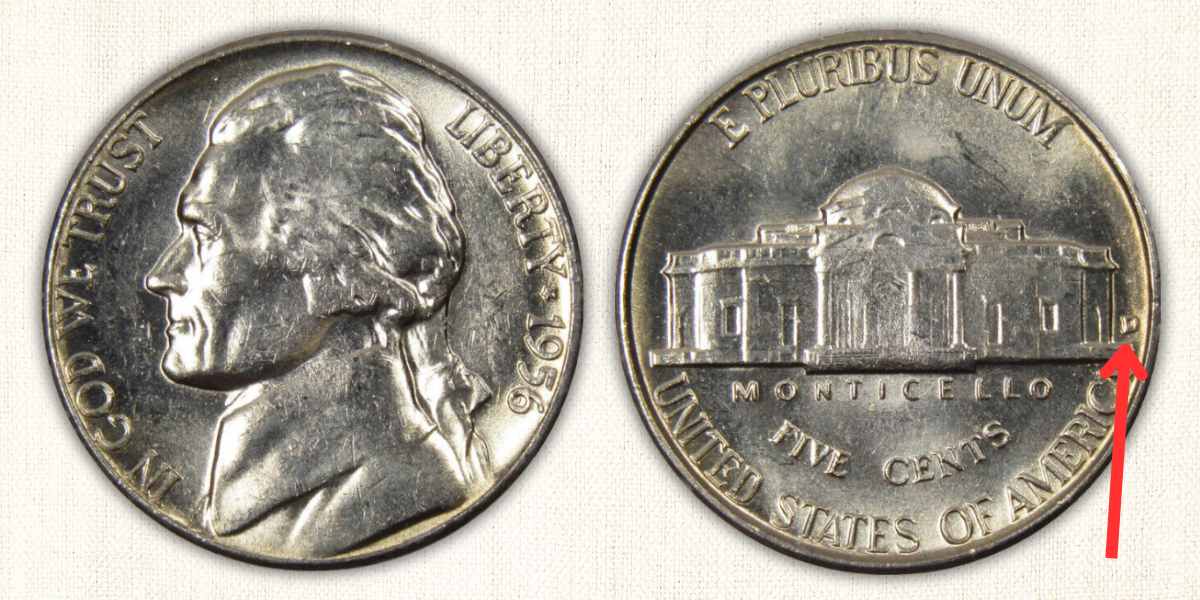
Like the Philadelphia Mint, a 1956-D nickel also has a good luster. However, many of them only have fair to good grades. Currently, a circulated condition is worth $0.10 to $0.20. But, it can reach $180 for uncirculated conditions.
| 1956 D Jefferson Nickel Full Steps Price Guide | |||
| Designation | MS 64 | MS 65 | MS 66 |
| 5FS | $235-$280 | $750-$1,000 | $2,000 |
| 6FS | $300-$375 | $1,200-$1,300 | – |
While a regular strike 1956-D is a common date, an MS 64 FS and above are hard to find. Based on PCGS, MS 66 is the highest grading available for this variety. And to back it up, there is an auction record by Stack’s Brower of a 1956-D Nickel MS66+FS sold at $7,200.
1956 (P) Proof Jefferson Nickel Price
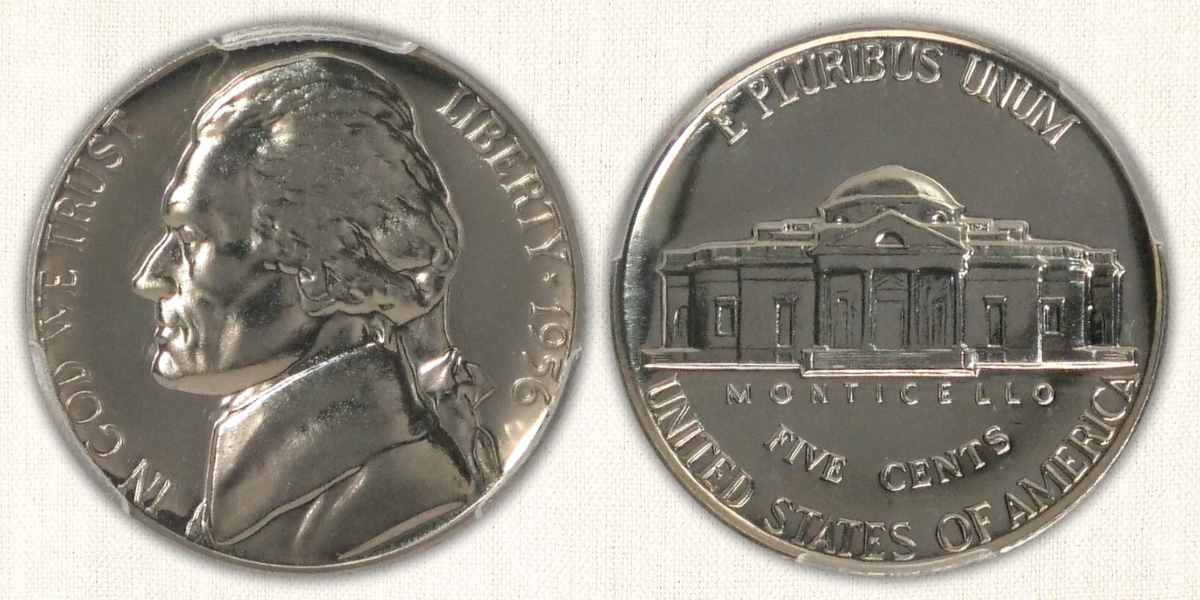
The 1956 Proof Set developed a frenzy among coin collectors. Most of these varieties are well-made and can fetch a premium price. On a recent auction, a 1956 PR69 Cameo was sold for $599.99 under eBay.
Cameo coins are scarce, with a survival estimate of 80,000 on PF 65 or higher. However, the Ultra Cameo is labeled very scarce by PCGS, with a survival estimate of only 5,000.
| 1956 Proof Jefferson Nickel Price Guide | |||
| Grading | PF | PF CA | PF UC |
| PF 60 | $0.50 | / | / |
| PF 65 | $15 | $32-$35 | $110-$150 |
| PF 66 | $25 | $40-$55 | $475-$675 |
| PF 67 | $27-$30 | $75-$100 | $1,050-$2,100 |
| PF 68 | $40 | $240-$500 | $3,000 |
| PF 69 | $155 | $900 | $5,150 |
Nickels with cameo effects sell at a premium price of $32 to $5,150. But it can reach a higher value in the open market. An example is a PR 69 Cameo sold at $1,528 by Heritage Auction.
Another is the PR 69 DCAM, sold at a flourishing $19,387.50 by Legend Rare Coin Firm. According to PCGS, this is the finest known coin in the 1956 variety, generating strong interest in the collectors.
A List of 1956 Nickel Mint Error Coins
A 1956-proof nickel is not the only coin that carries a valuable price, there are also mint errors that can elevate the base value of a 1956 five cent. An example is the 1956 5C PR 68 DDO, which sold for $425 in 2022.
Now, if you have a bunch of nickels waiting on the sideline, it’s time to scan through some errors that would give you a worthwhile price trade.
Doubled-Die Reverse Error
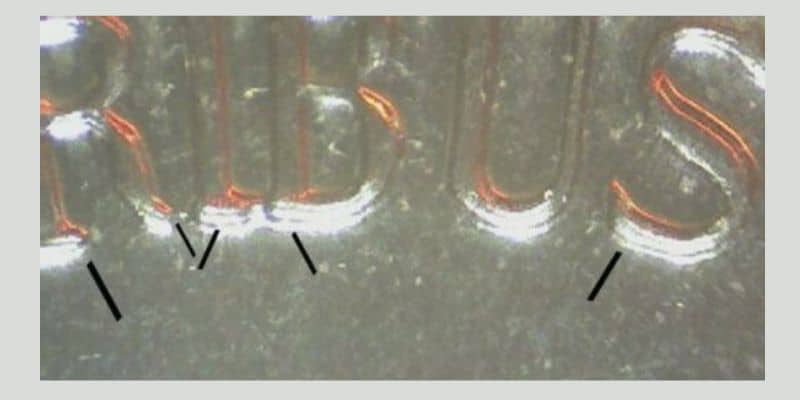
Based on NGC, there are several 1956 doubled-die reverse errors from the Philadelphia Mint. This error type occurs when the design doubles during the hobbing process.
To find a DDR, look at the edges of the relief and see if there are slightly off patterns. But to be accurate, it is best to use a micro camera as the Monticello is very detailed.
This type of error can fetch up to $10 to $20.
Clipped Planchet Error
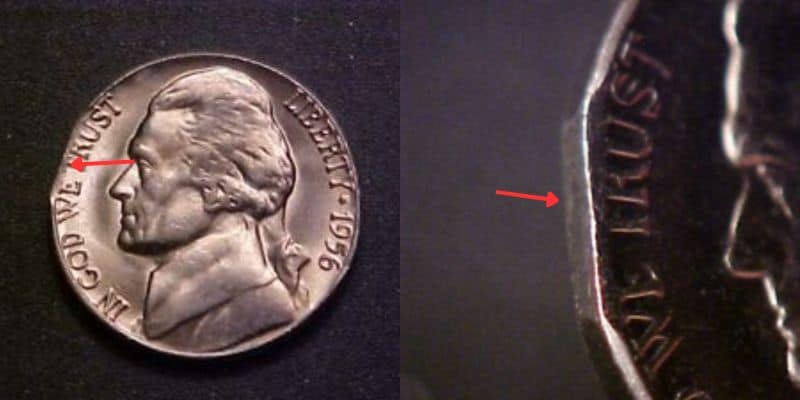
Straight-edge clipped planchet error happens when the punch overlaps the edge of the metal. It is characterized by a missing metal piece on one side of the coin.
Although it’s not under the rare category, it still has a good value. For a Jefferson nickel, a clipped planchet can sell for around $3 to $10 for average circulated conditions.
Rotated Die Reverse Error Coin
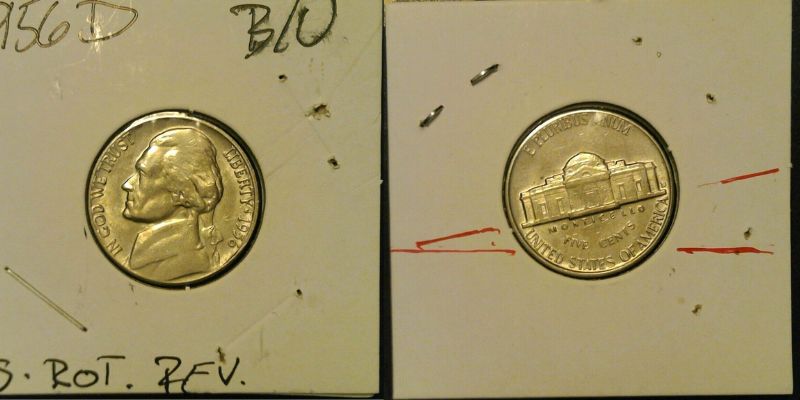
There are two possible errors for the rotated die to occur. First is a human error wherein the die is placed incorrectly, resulting in misaligned obverse and reverse design.
The second is when the die loosens and moves an angle before it gets struck. An error coin with a rotation angle of 90 and 180 degrees can sell at a premium. However, those with an angle less than 15 degrees are not considered a mint error.
Struck Through Error

Struck-through error is the most prevalent type of mint error. Struck through happens when a foreign object goes between a die and a blank during the strike.
It can be a minuscule error or a very large strike-through. If it is the latter, it is automatically ineligible for an MS 70 grade. However, based on PCGS, this error can sell from $1 to $50, and a larger strike-through is more expensive.
Re-Punched Denver Mint Mark

A Re-Punched Mint mark (RPM) has an overlapping of two or more mint marks on the reverse side. It can be due to a malpositioned coin after an attempt to correct the initial mark or a rebound letter punch.
To further classify the offset, they use the cardinal direction to point where the secondary mintmark appears. This type of error can sell for $5 to $10 but can go at a higher value depending on the condition.
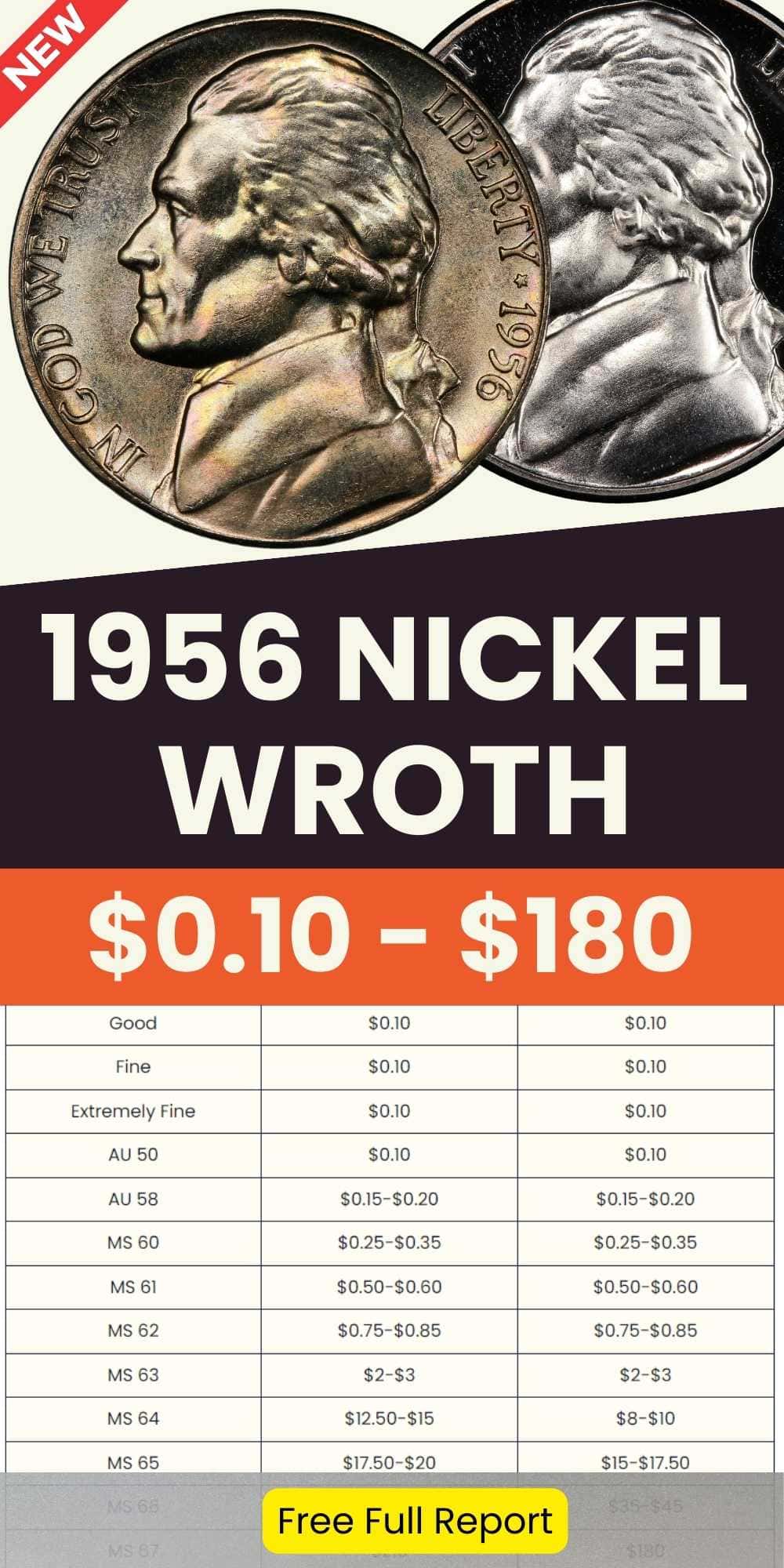

Jenson is a professional numismatist, a dedicated coin collector, a graduate of the College of Business at Oregon State, a life member of the American Numismatic Association (ANA), and an overall coin nerd. He is the founder of Coin Value List.
